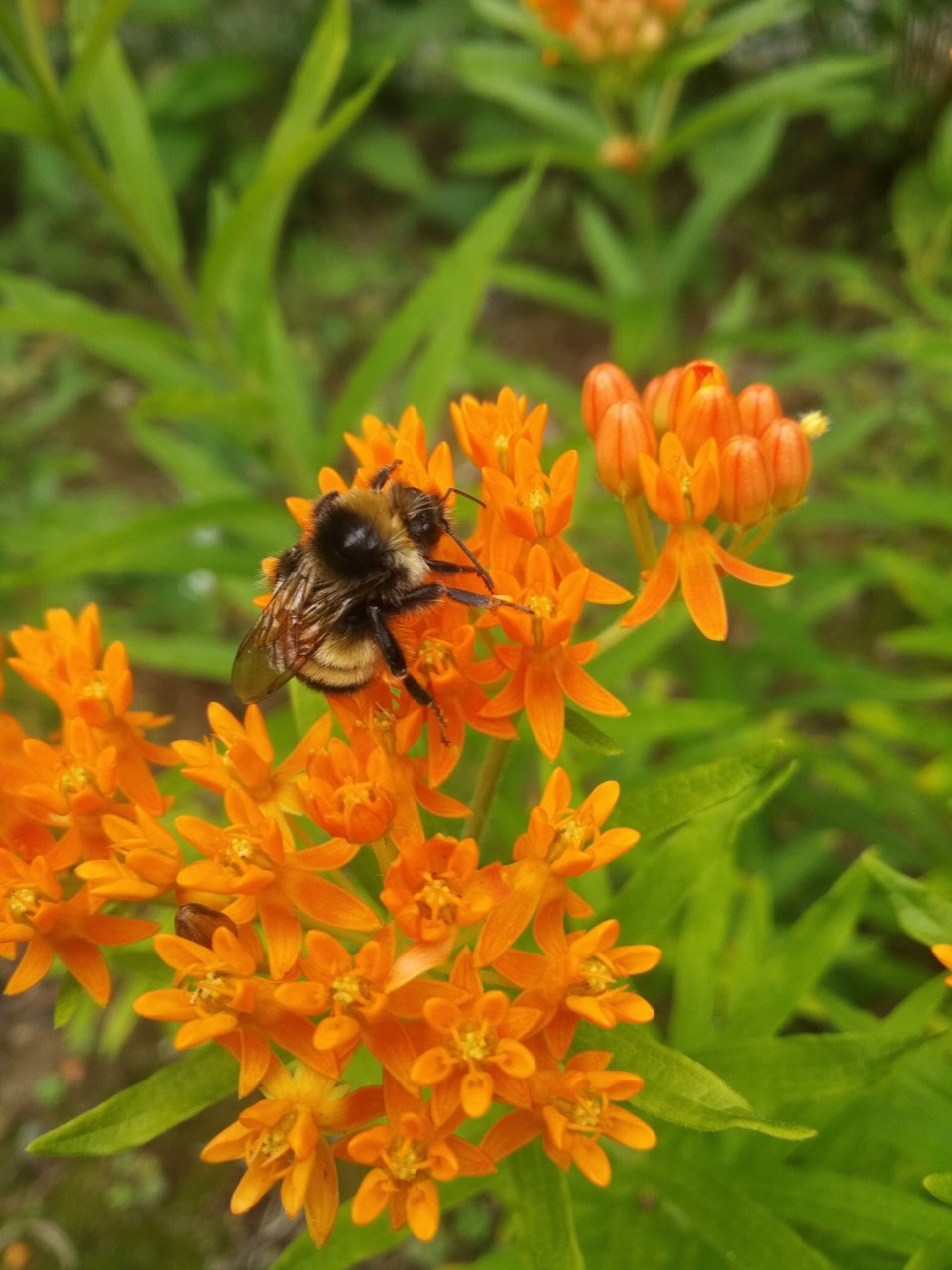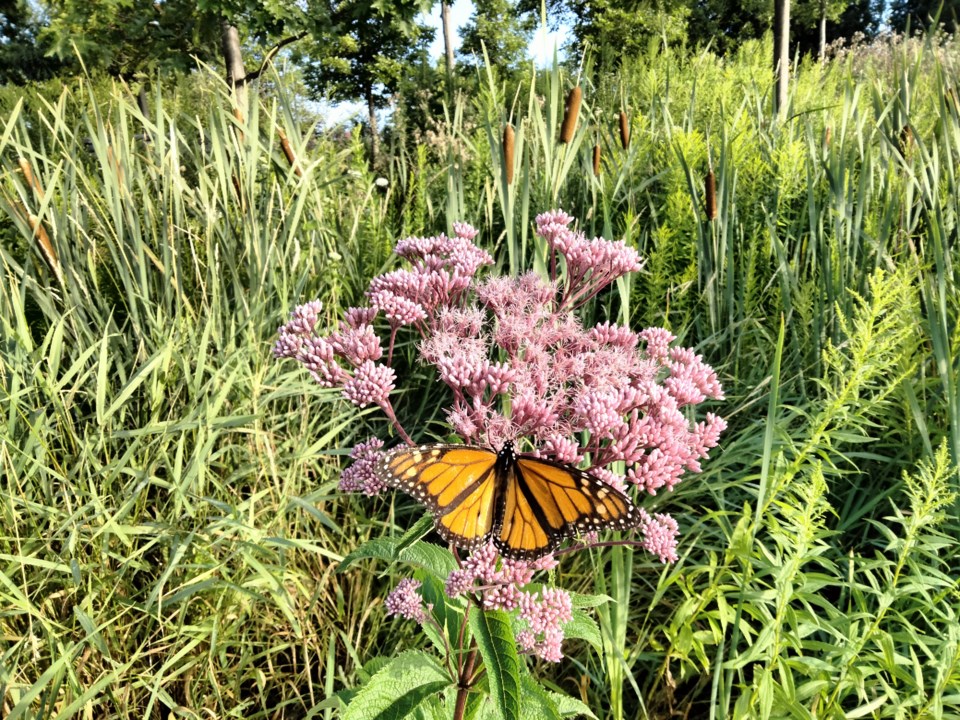Depending on your point of view, the 'No Mow May' message shared by some nature advocates could sound like a simple way to help wildlife, a welcome excuse to put off chores for a few more weeks, or a first step down the road to anarchy.
Knowing that your neighbours may differ in their attitudes can make it hard to judge whether to participate.
From the perspective of helping spring pollinators, skipping May mowing is not a bad idea. It lets some flowers spring up among the turfgrass, providing an early-season source of nectar. This is great for 'generalist' insects that aren’t too specific about what species of flowers they feed from, like the bicoloured sweat bee, but there are even better ways to help pollinators and other wildlife.
That’s because the flowers most likely to crop up during No Mow May, like dandelions and clover, are not native to North America — and what many wildlife species really need are native plants.
Native plants are the ones that evolved in your local area over thousands of years. All the while, native pollinators were living and evolving right alongside them. Not unlike a family preferring the traditional cuisine it’s been enjoying for generations, some pollinators have become specific in their needs over time, coming to depend on the type of food provided exclusively by particular native plants.

That’s why growing native plants, shrubs, and trees is such a powerful way to help restore habitats and reverse biodiversity loss. It re-establishes those ancient relationships, so that native pollinators, (and other native wildlife, too) can find the resources that fit their needs instead of scraping by in sea of non-native Kentucky bluegrass, peonies and hostas that they’re not entirely adapted to.
So by all means, leave your mower stored away for now, especially if it’s a gas mower, since this will reduce your carbon emissions, too! But even better, consider replacing part of your lawn with native plants.
Here are some more lawn and yard tips for helping nature thrive:
- Raise the blades on your mower to keep your lawn at least eight centimetres long, and wait at least two weeks in between mowings — not just in May, but throughout the spring, summer and fall.
- Instead of a “wall-to-wall” carpet of turfgrass, replace part of it with a pollinator garden, rain garden or hummingbird garden, or some native shrubs and trees. Not only will this benefit wildlife, these low-maintenance species will save you time and money that you’d otherwise spend on lawn care.
- Want to grow native plants but not sure where to start? Sign up for a free re:grow account to access how-to guides with advice from WWF-Canada’s experts.




